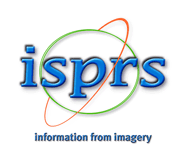Improving Camera Exterior Orientation Estimation using Vanishing Point Detection
Keywords: camera exterior orientation estimation, vanishing point detection, machine learning
Abstract. The estimation of camera pose with respect to a known object has been a fundamental challenge since the inception of photogrammetry. This task is crucial for applications ranging from 3D reconstruction to augmented reality. However, for cameras equipped with lenses that have a small field of view, which approximate an orthographic projection, the accuracy of contemporary methods remains suboptimal. The objective of this study is to enhance the precision of camera exterior orientation estimation by employing a modified approach that takes advantage of vanishing point detection.
Our proposed method hinges on detecting vanishing points using two pairs of parallel lines with known orientations in scene space. This technique contrasts traditional approaches such as the Direct Linear Transform (DLT) by integrating vanishing point information to refine orientation estimates. The primary contribution of our work lies in the comparative analysis between these conventional methods and our novel vanishing point-based approach, highlighting the potential improvements in accuracy.
The results obtained from our experiments are promising, indicating that the vanishing point-based approach enhances camera position estimation accuracy by approximately 14% for lenses with a small field of view. These findings underscore the potential of vanishing point detection in improving pose estimation where traditional methods falter due to limited perspective distortion. In conclusion, we have introduced a modified method for camera external orientation estimation based on vanishing point detection. This method was rigorously evaluated on multiple public datasets and a specially designed synthetic dataset that includes samples with small fields of view. Our approach consistently improved accuracy by 14%, demonstrating its efficacy and potential for broader application in photogrammetric tasks where precision is paramount.





